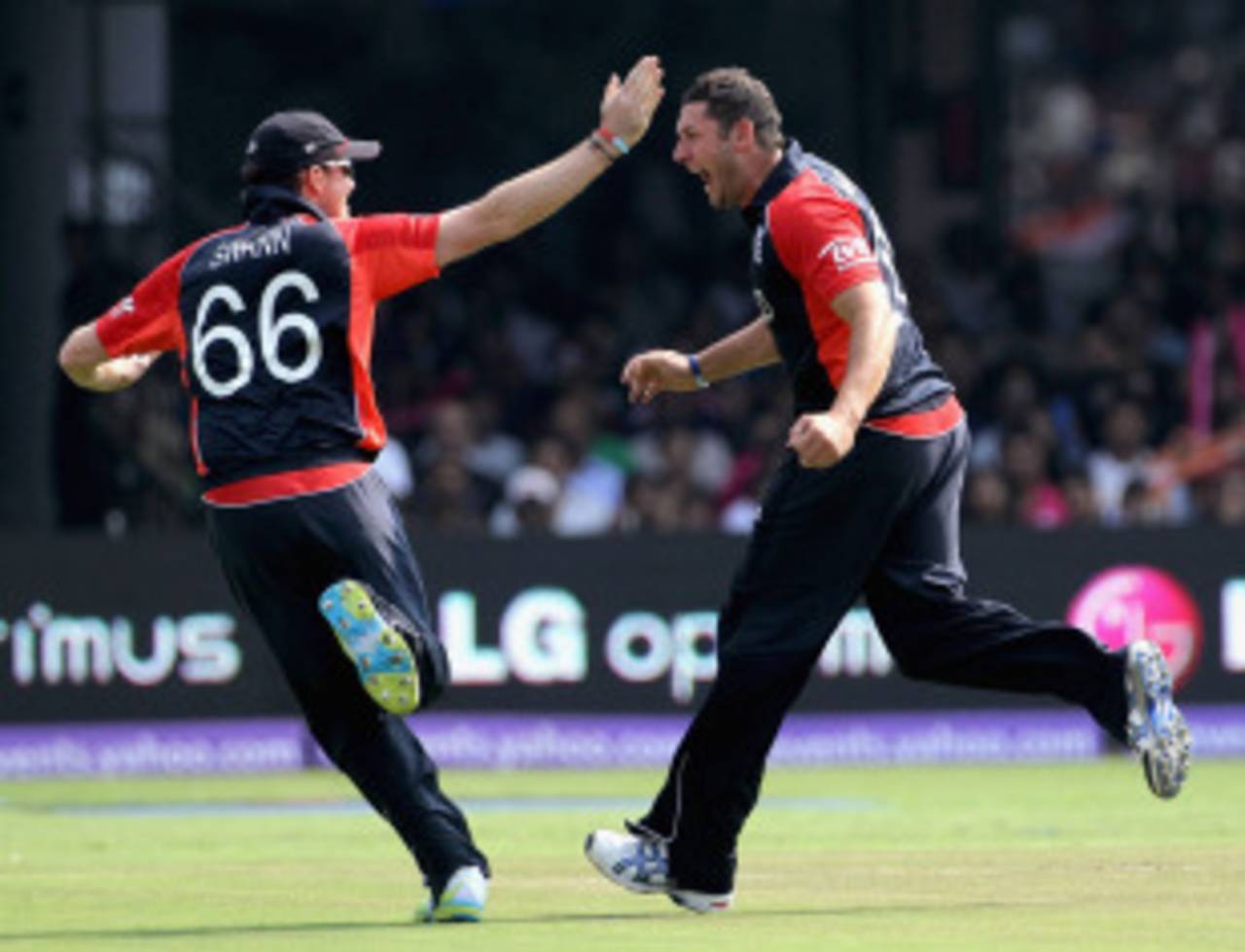Strauss and Bresnan make it special for England
Stats highlights from the fourth tie in World Cup history
S Rajesh
27-Feb-2011

Tim Bresnan took five wickets at an economy rate of 4.80 when all the other bowlers struggled • Getty Images
In a match which set the record for the most runs in a World Cup game, one bowler deserves a mention upfront, before the focus shifts to all the batting records: Tim Bresnan took his maiden five-for, and finished with an economy rate of 4.80 runs per over while the average for the entire match was almost two runs more than that. The next-best bowler in terms of economy rate from either side was Harbhajan Singh, with 5.80. No other bowler went at less than a run a ball, with one, James Anderson, conceding the most runs in his ODI career. (He has conceded 91 in an innings twice within a month, after never having conceded more than 86 in his ODI career before this; it was also the first time in seven ODIs in India that he managed to take a wicket.)
That said, it was still a game that will be remembered for all the batting landmarks. The total runs scored in the match was 676, which is the highest in a World Cup match, going past the previous record of 671 when Australia played South Africa in Bassaterre in 2007. On that occasion Australia contributed 377 and South Africa 294.
England will look back on the game as one in which they let slip an opportunity to win. They still finished with their highest World Cup score, going past their 334 against the same opponents way back in 1975. That they almost registered the highest successful World Cup run-chase was due to a magnificent 158 by Andrew Strauss, his highest ODI score, and easily one of the best ODI innings played by an England batsman. It was the sixth-highest in a run-chase, and England rode on that effort to make the highest second-innings total in World Cups. In fact, three of the four highest scores stand in their name, and two of those have come within a week.
There were two high-class centuries in the match, but given the context of the game, Sachin Tendulkar's innings was overshadowed by Strauss' century. Tendulkar became the most prolific hundred-maker in World Cup history, but Strauss, with his highest ODI score and his maiden World Cup ton, brought England back to life when all looked lost. Strauss scored the bulk of the runs in the first five overs, and then scored consistently throughout the innings, never allowing the asking rate to go out of control.
Tendulkar scored 28 in his first 47 balls, allowing Virender Sehwag and Gautam Gambhir to do the bulk of the early scoring, before taking charge himself. It was the best strategy for the team, but Strauss kept up with the asking rate superbly, scoring 47 from his first 47 balls, and then slowly raising the tempo. His dot-ball percentage was much lower than Tendulkar, which shows how well he manoeuvred the ball around. Overall too, England played far fewer dot balls than India (see vital stats at the bottom of the page).
| Batsman | Runs | Balls | Run rate | Dot balls | 4s/ 6s |
| Andrew Strauss | 158 | 145 | 6.53 | 55 (37.93%) | 18/ 1 |
| Sachin Tendulkar | 120 | 115 | 6.26 | 57 (49.57%) | 10/ 5 |
In the end, though, England will be thankful for the 35 runs off 20 balls that Bresnan, Ajmal Shahzad and Graeme Swann contributed. That ensured that England got the chase back on track despite scoring only nine from four overs between the 42nd and the 45th. The fourth tie in World Cup history was, all said and done, a fair result.
S Rajesh is stats editor of ESPNcricinfo